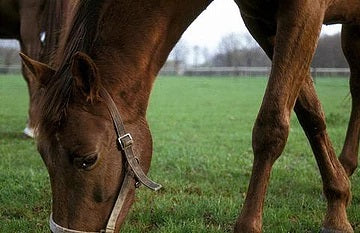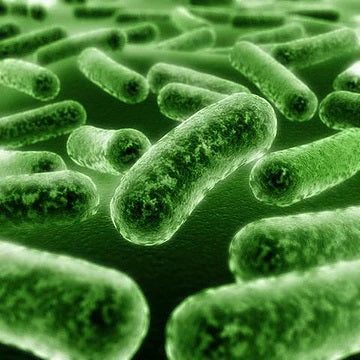Your Cart is empty
While ‘A little of what you fancy’ may do you good, the problem is that very few of us are eating only ‘a little’ because there is now so much hidden sugar in all food that instead of eating approximately 20 pounds per year (pre-WW1 figure) we are now eating more than our own body weight in sugar every year!
 Unfortunately, the same has happened to the horse. The new productive grasses, course mixes and forages all contain more sugar, known as water soluble carbohydrate-WSC, than they used to, so horses are eating much more than they need. This has led to an increased incidence of diet-related metabolic disorders such as Insulin Resistance, Metabolic Syndrome and Laminitis.
Unfortunately, the same has happened to the horse. The new productive grasses, course mixes and forages all contain more sugar, known as water soluble carbohydrate-WSC, than they used to, so horses are eating much more than they need. This has led to an increased incidence of diet-related metabolic disorders such as Insulin Resistance, Metabolic Syndrome and Laminitis.
Those animals with a pre-disposition to any of the above, or those that gain weight easily, should be fed a sugar-reduced diet. This involves finding permanent pasture which contains high-fibre, low-sugar grasses such as Common Bent, Yorkshire Fog, Cocksfoot and Meadow Grass, cutting-out concentrate feeds, and feeding low-sugar high-fibre forage.
While it is possible to remove concentrates and limit access to pasture, it is not always possible to find hygienically clean forage that is low in sugar. UK hays commonly range from 100-310 g WSC/kg DM. Restricting forage is not an option as preventing the natural feeding behaviour of horses can lead to gastric ulcers and stereotypic behaviours. Thus, the only option is to find forage that contains <100g WSC/kg DM or process it to reduce the sugar content.
 Many owners soak hay for long periods, often for 12 hours or more, and while this does decrease the water-soluble carbohydrate (WSC) or sugar levels it is not a consistent process. Losses can range from 9 to 54% after a 16-hour soak, and these losses do not relate to grass species, or WSC content.
Many owners soak hay for long periods, often for 12 hours or more, and while this does decrease the water-soluble carbohydrate (WSC) or sugar levels it is not a consistent process. Losses can range from 9 to 54% after a 16-hour soak, and these losses do not relate to grass species, or WSC content.
Thus, it is not possible to predict how much sugar is lost from hay when soaking. Furthermore, the post-soak liquor is a strong pollutant (biological oxygen demand (BOD) of nine times that of raw sewage) (Warr and Petch 1992) so must not be poured down storm drains. Even more worrying is the recent work that has shown that soaking increases the bacterial content of hay (Moore-Colyer et al 2015, Wyss and Pradervand, 2016. This compromises the hygienic quality of the forage and could raise the bacterial concentration above the upper safe limit of 20µg/g, possibly leading to colic and undesirable strong immune responses in horses. On top of that soaked hay is not always palatable so getting horses to eat soaked hay can be a problem.
Steaming hay also causes a drop in WSC content. A study that measured WSC in 30 different UK hays showed an average actual loss of 2.3% and a proportional loss of 18% but, as with soaking, the losses were very variable (2 - 54%) and could not be predicted on a grass species nor WSC content basis (Moore-Colyer et al 2015).
The inconsistency of these processes means that neither soaking nor steaming alone can be relied upon as guaranteed methods for reducing the WSC content in hay.
However, the main advantage of steaming over soaking is that it kills the bacteria and moulds in the hay, producing hygienically clean fodder for your horse.
The best option is to find a high-fibre hay, steam it and send a sample to a laboratory for WSC analyses. You can then see if steaming your hay not only makes it hygienically clean but also suitable (<100g WSC/kg DM which is the equivalent to <10%) to feed to an EMS / laminitis-prone horse.
If finding a high-fibre hay with a relatively low WSC content is not possible then the latest published research suggests a combination of both soaking and steaming is the next best option. Moore-Colyer et al 2014 recommends a 9 hour soak followed by a 50 minute steam for reducing WSC.
Link to finding: https://www.ncbi.nlm.nih.gov/pmc/articles/PMC4245254/
References:
Moore-Colyer MJS, Lumbis K, Longland AC, Harris PA. (2014). The effect of five different wetting treatments on the water soluble carbohydrate content and microbial concentration in hay for horses. Plos One.
Moore-Colyer, M.J.S. Taylor, J. and James, R (2015). The effect of steaming and soaking on the respirable particle, bacteria, mould and nutrient content in hay for horses. Journal of Equine Veterinary Science. Aug 2015
Warr, E., and Petch, J (1992) Effects of soaking hay on its nutritional quality. Equine Veterinary Education 5: 169-171
Wyss, U. and Pradervand, N. (2016) Steaming or Soaking. Agroscope Science. Nr 32 p32-33
See details about Haygain Hay Steamers, these products are available in Amacron Equine online horse supplies.


